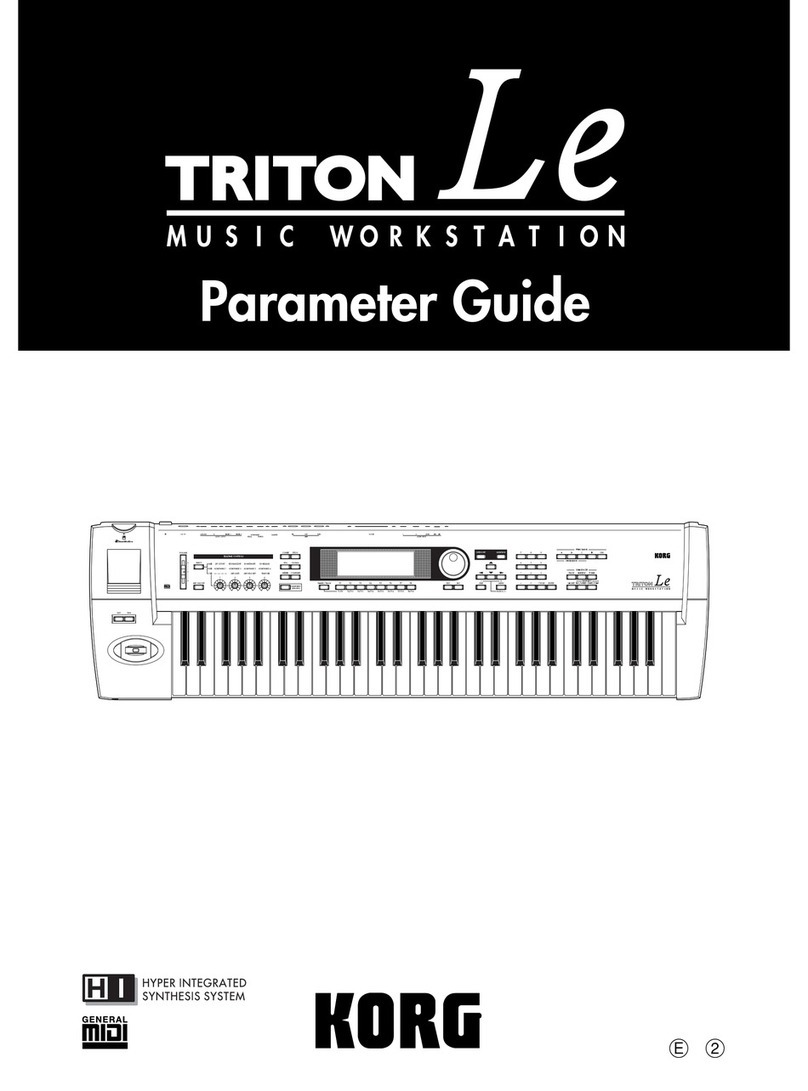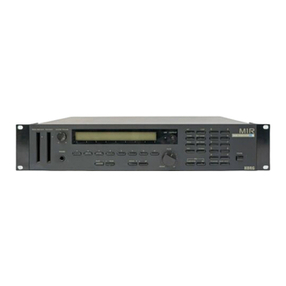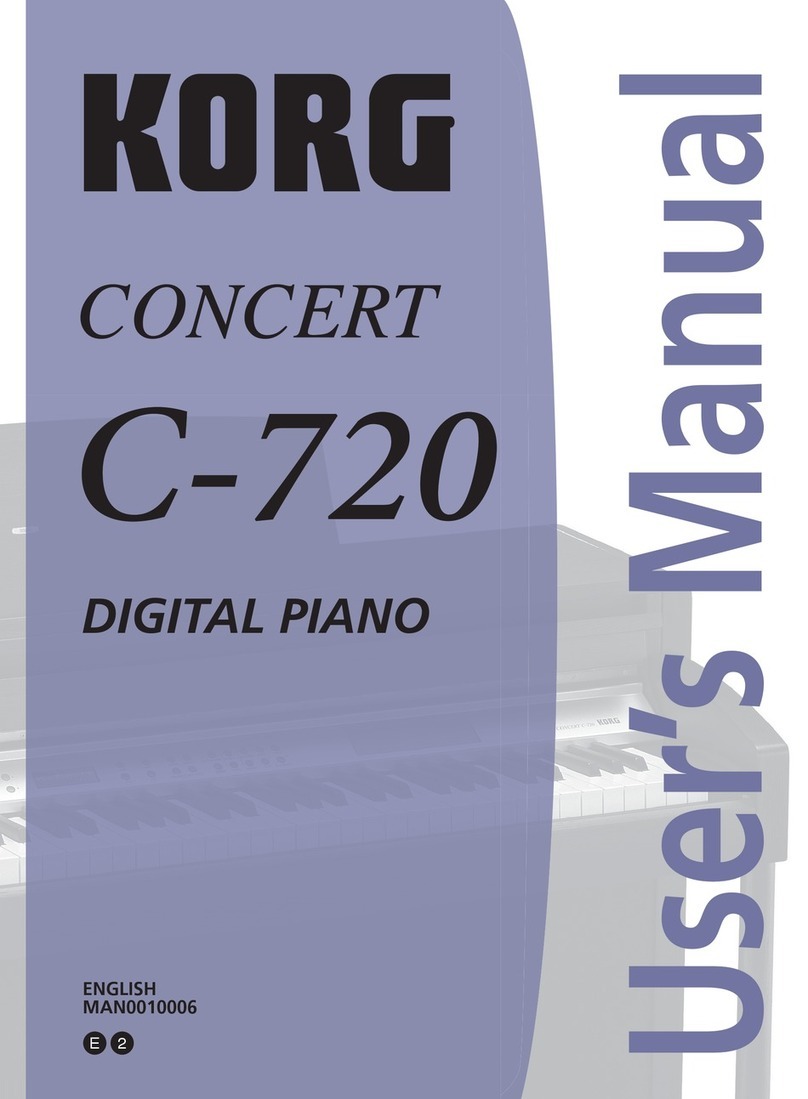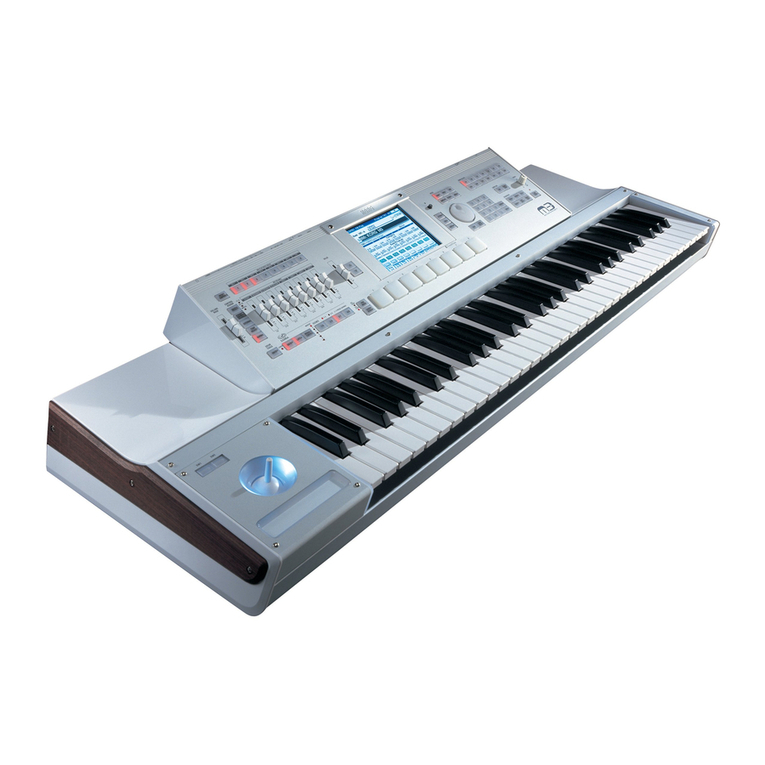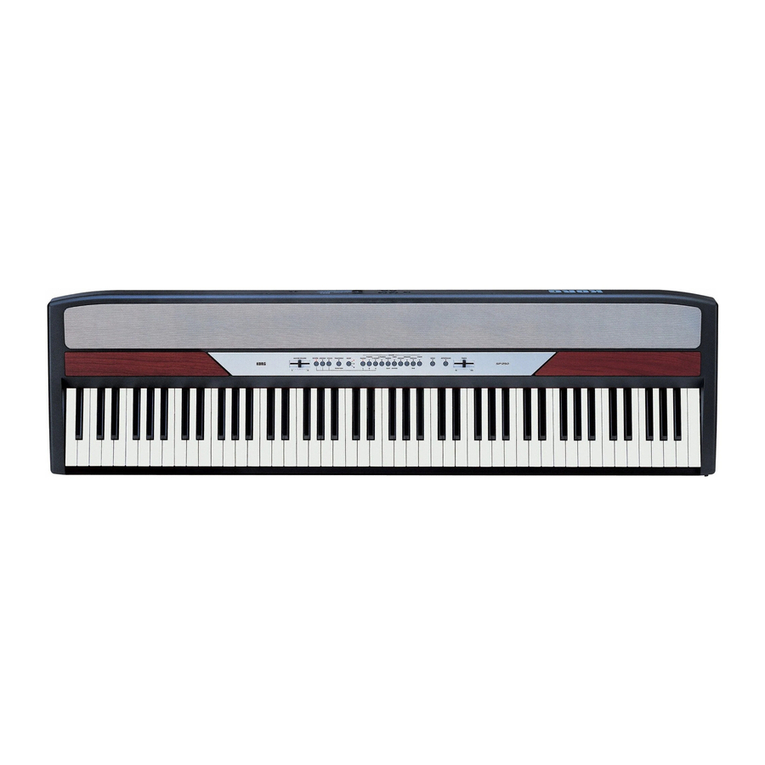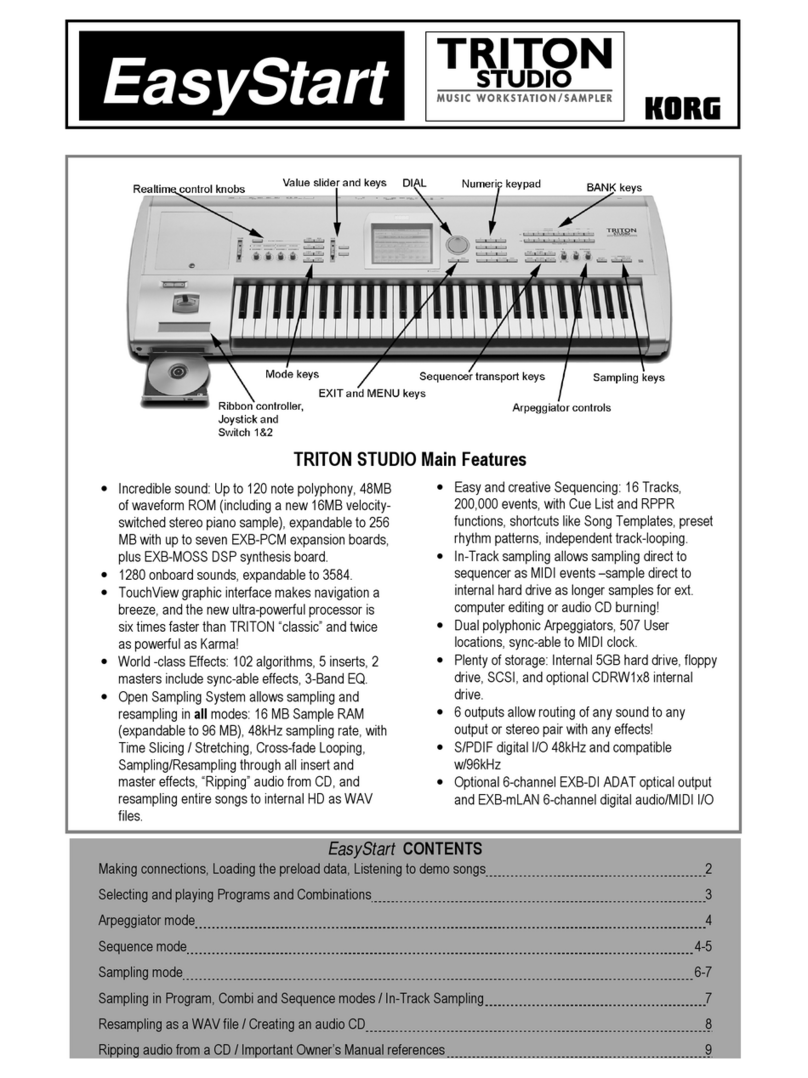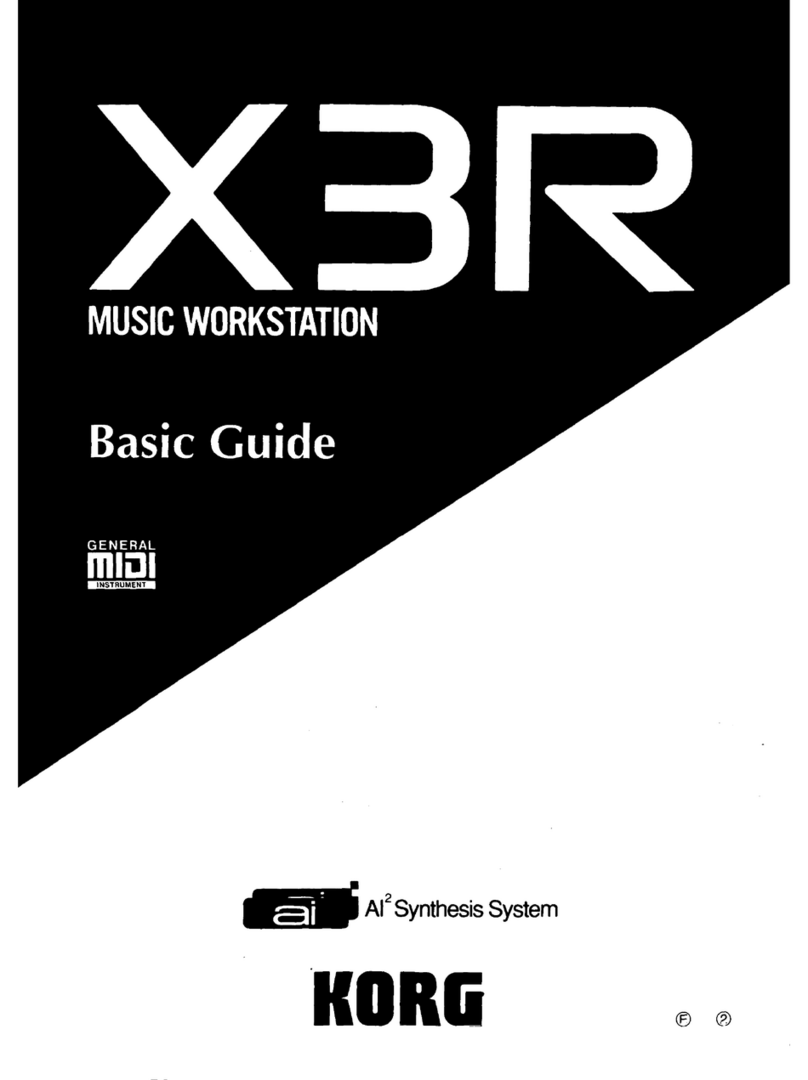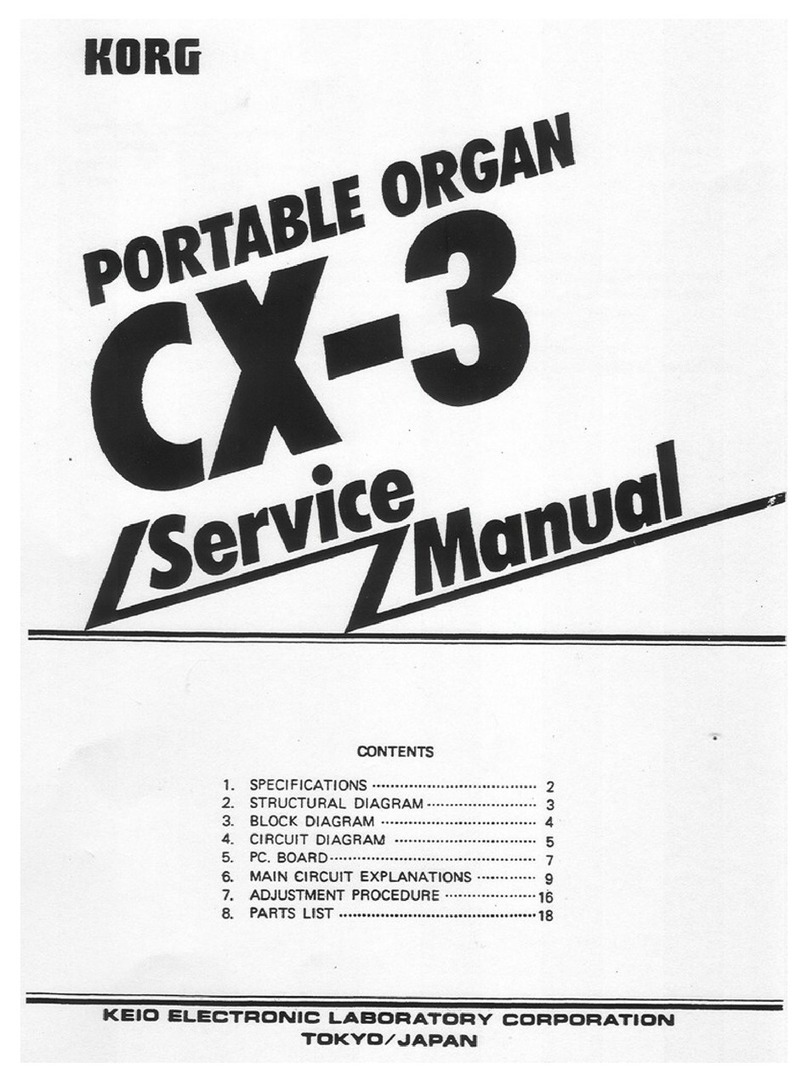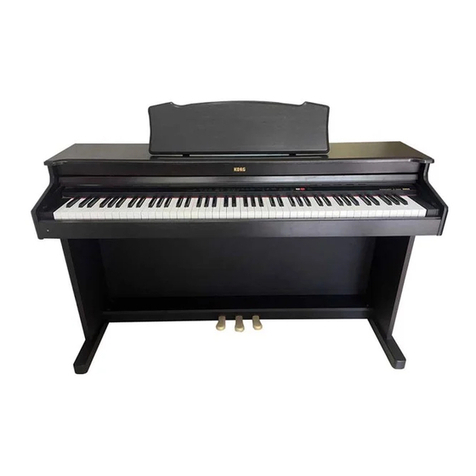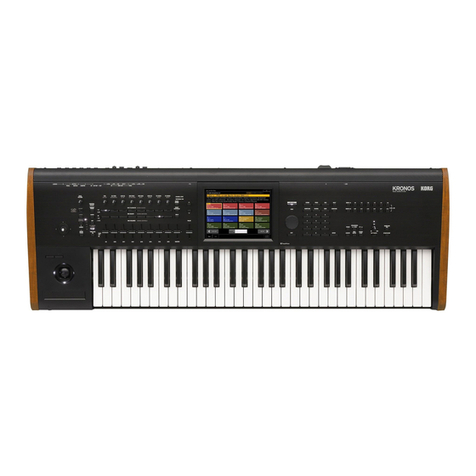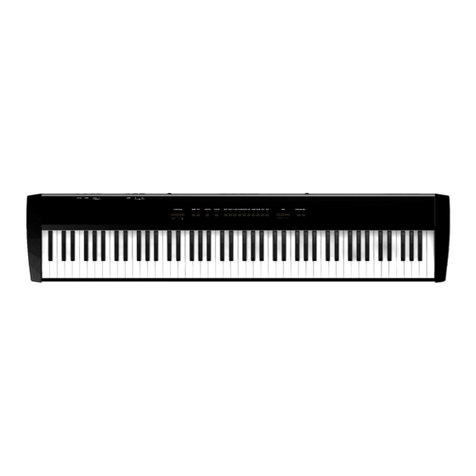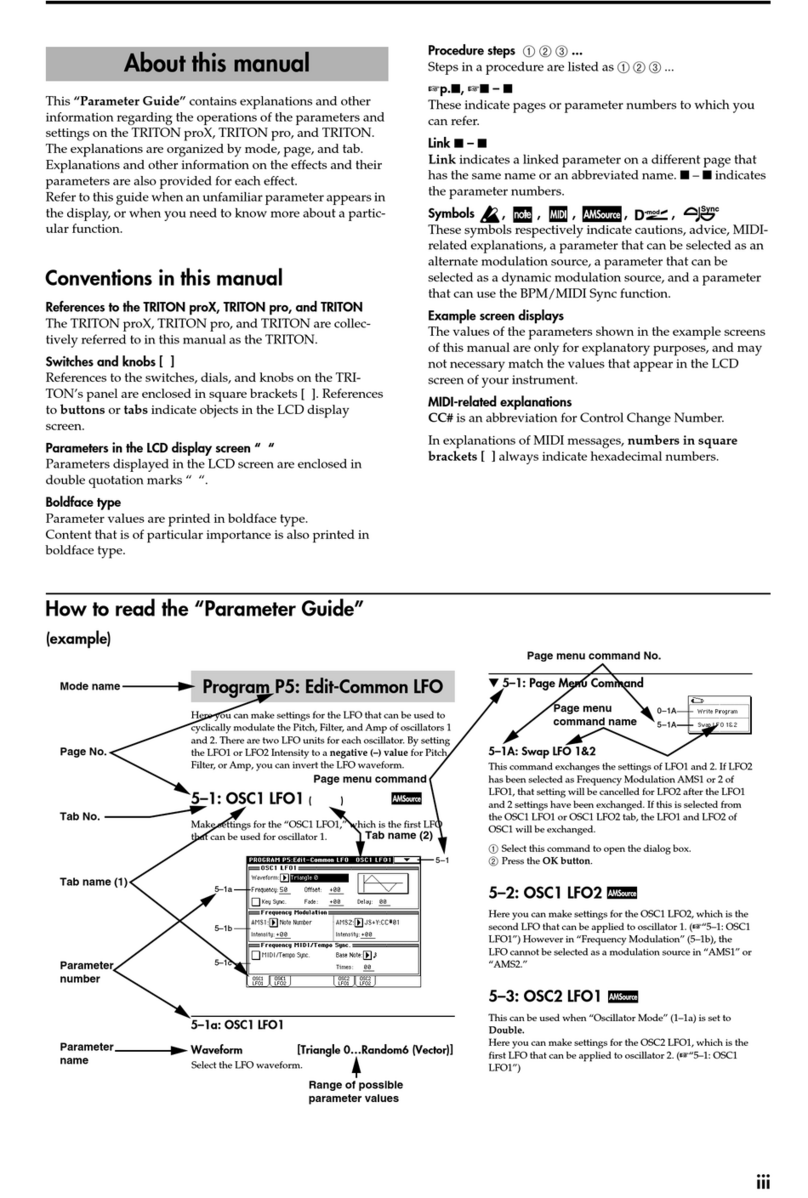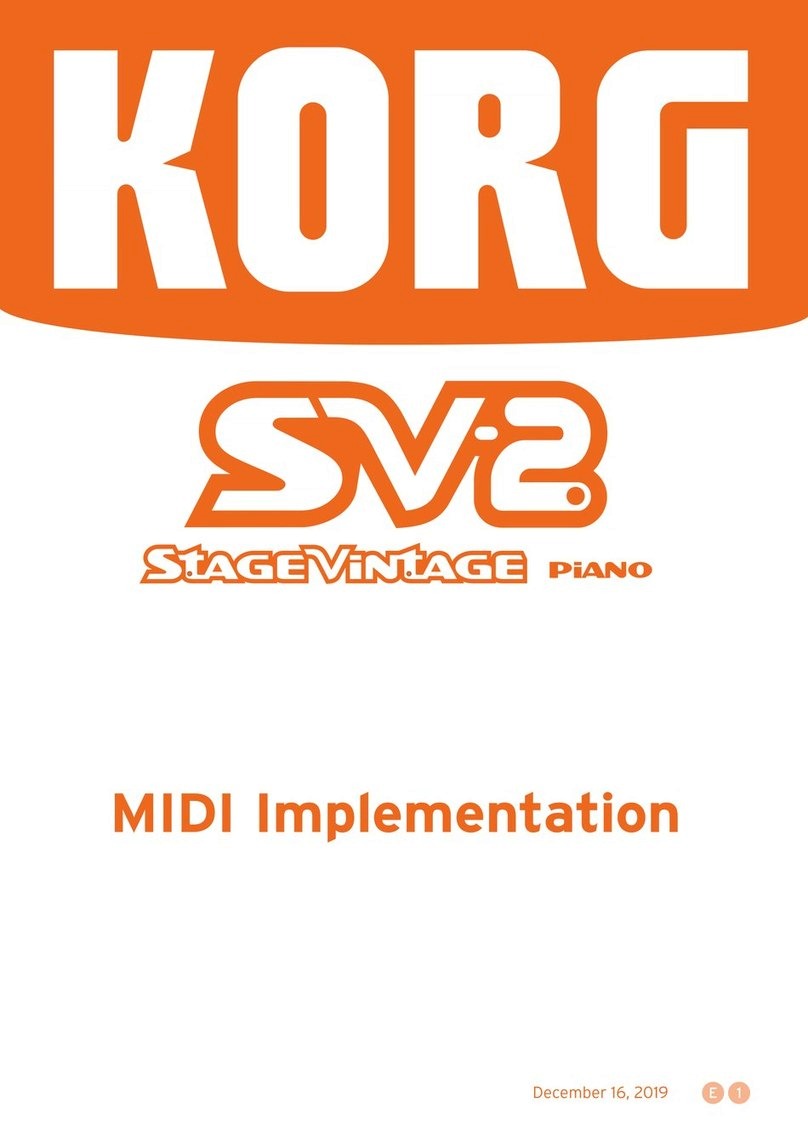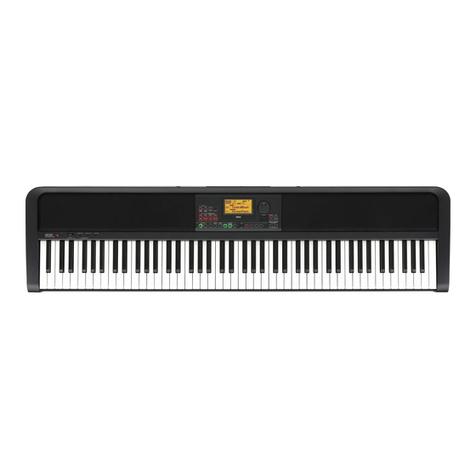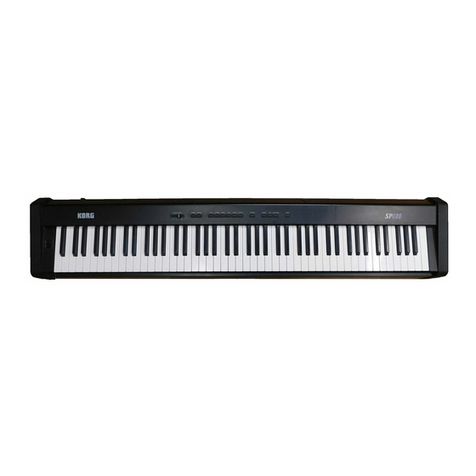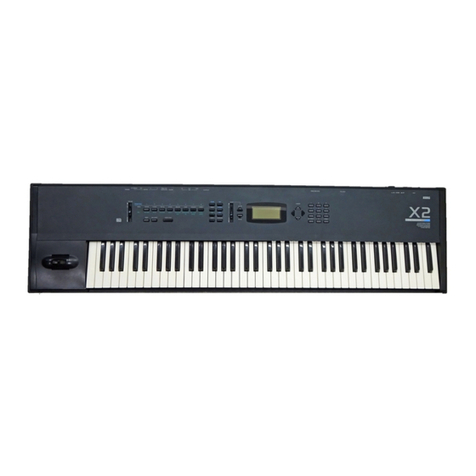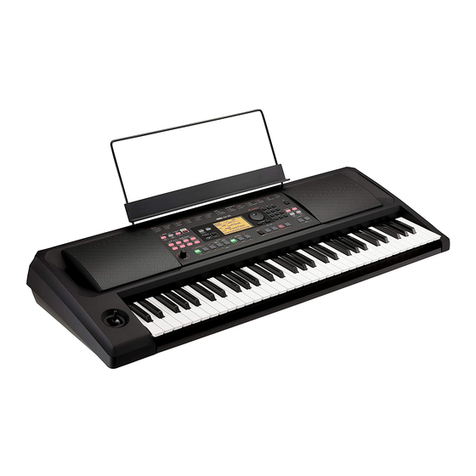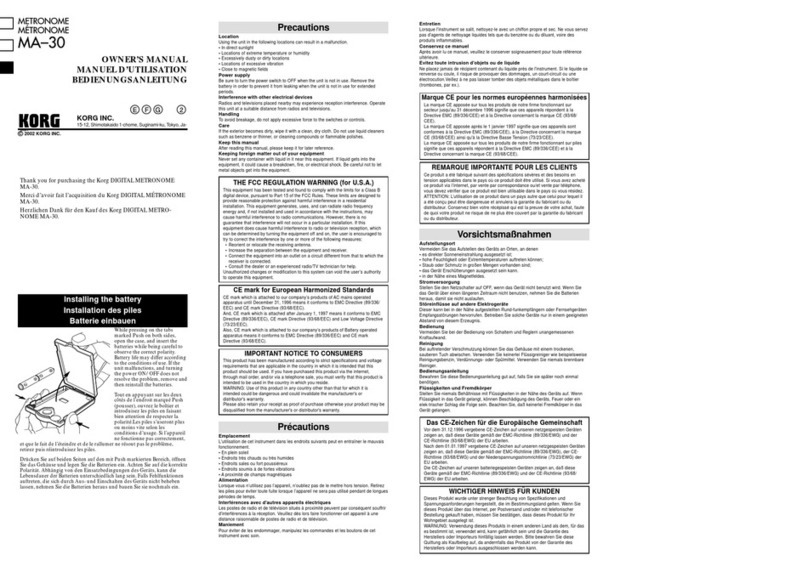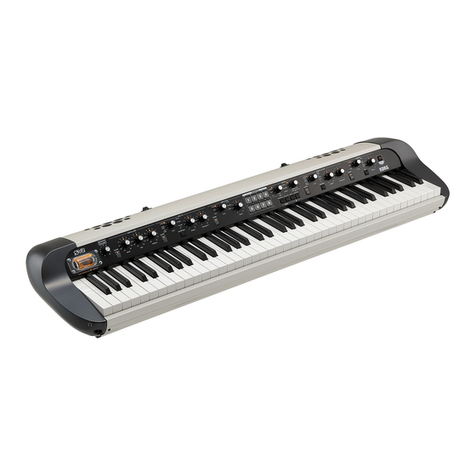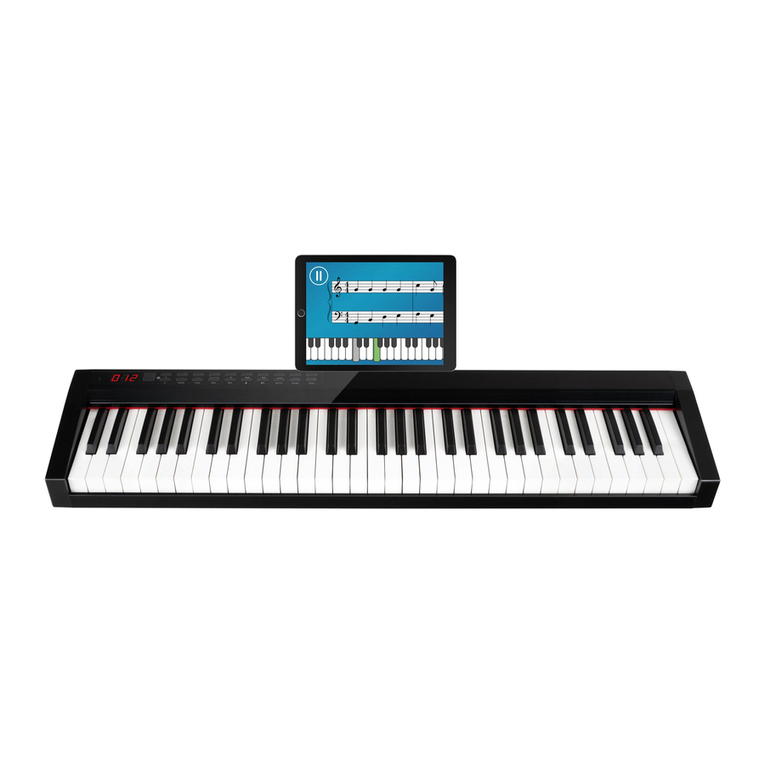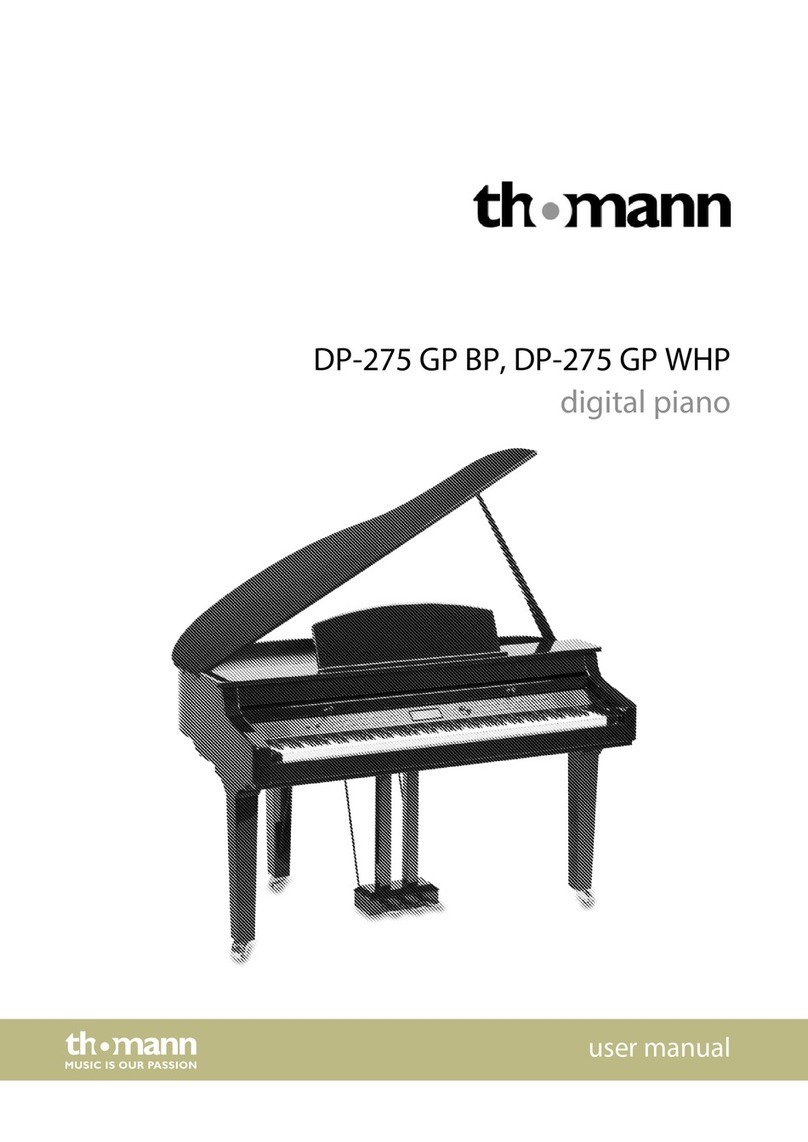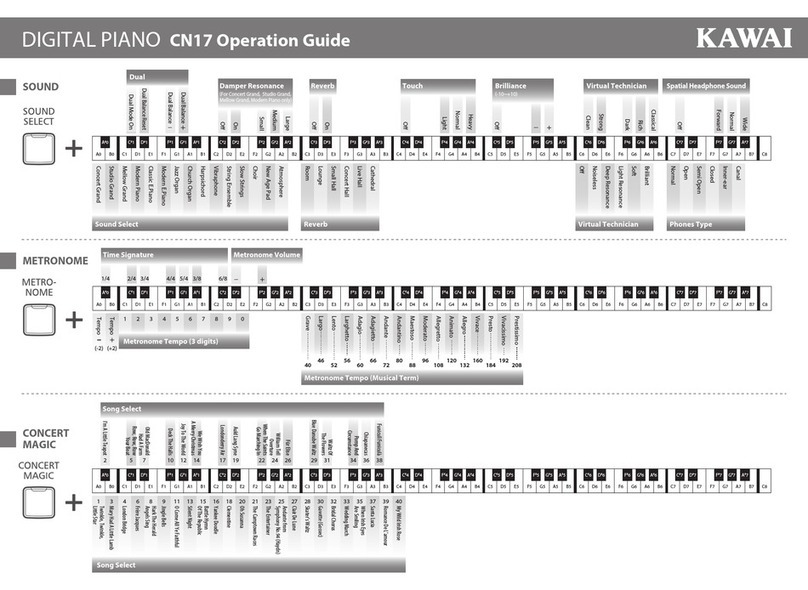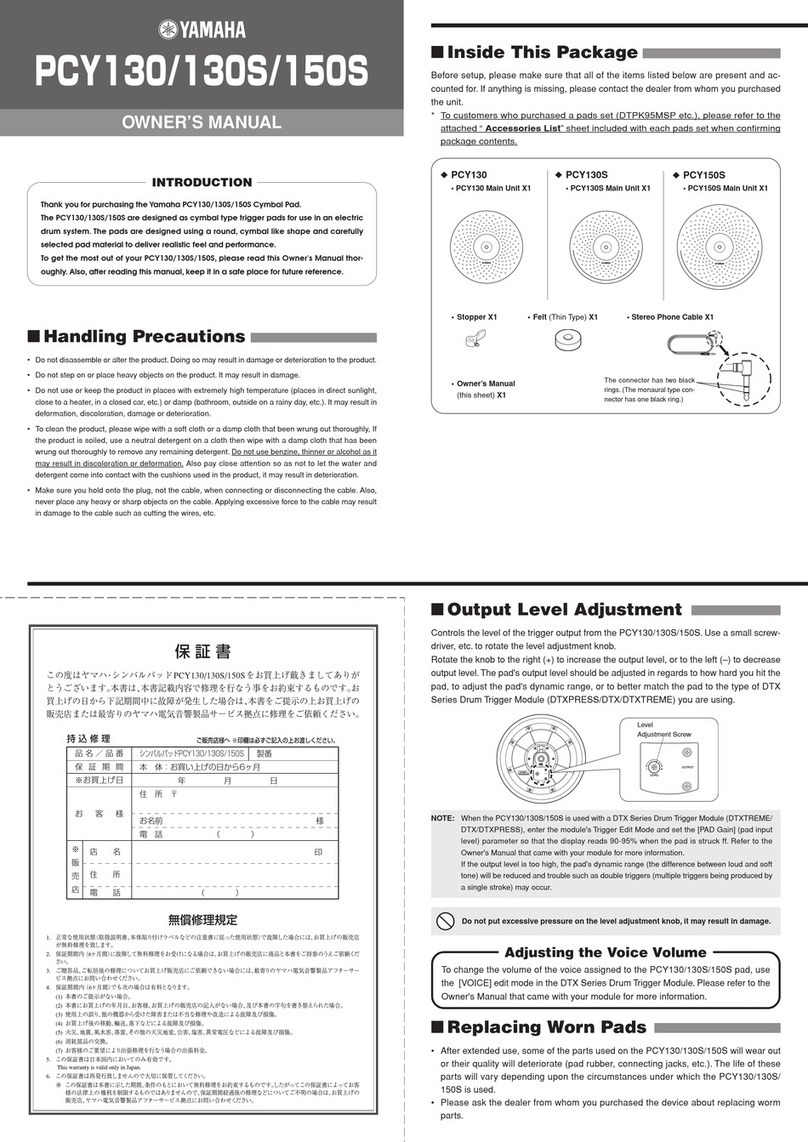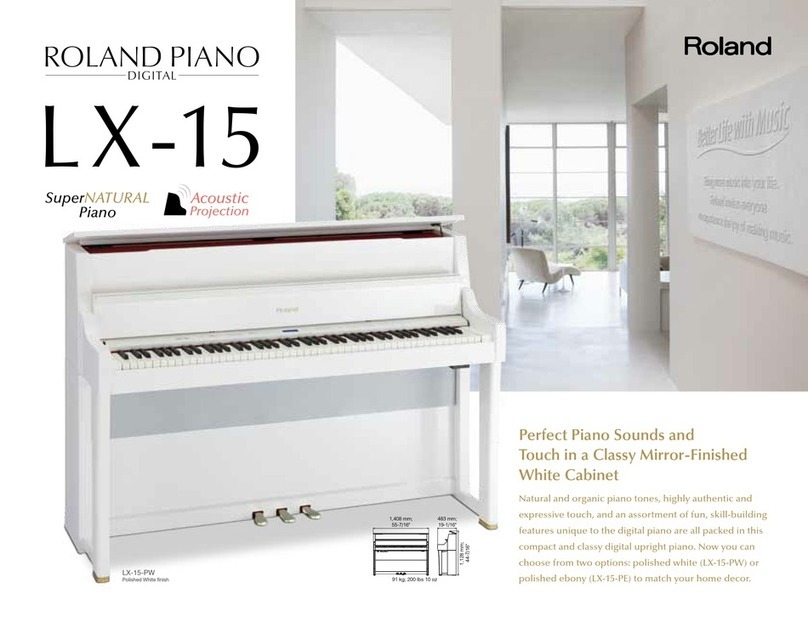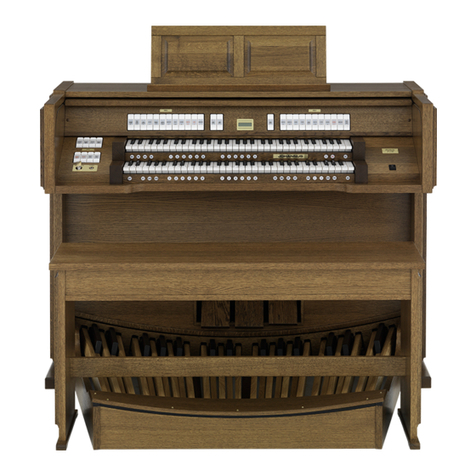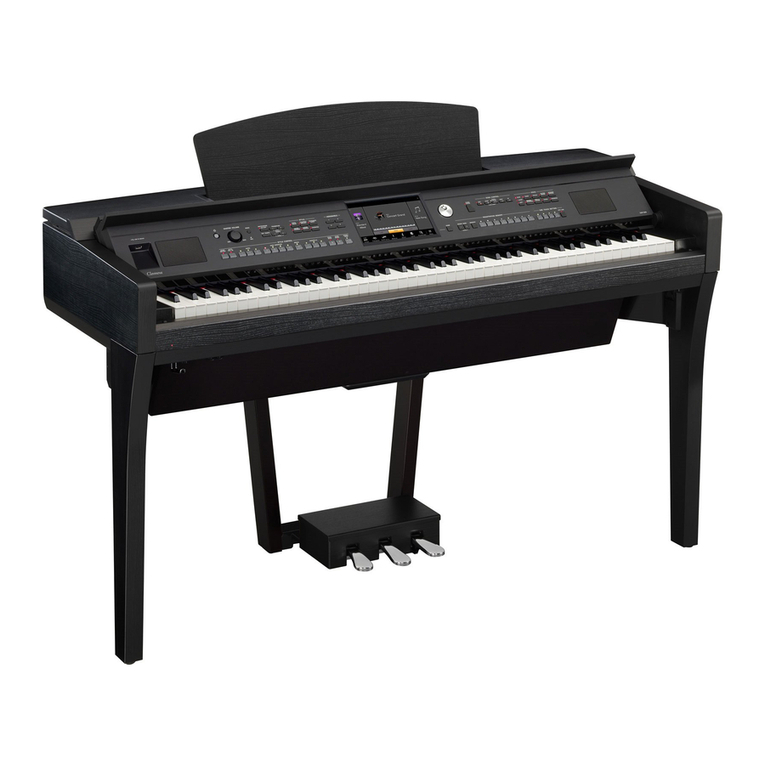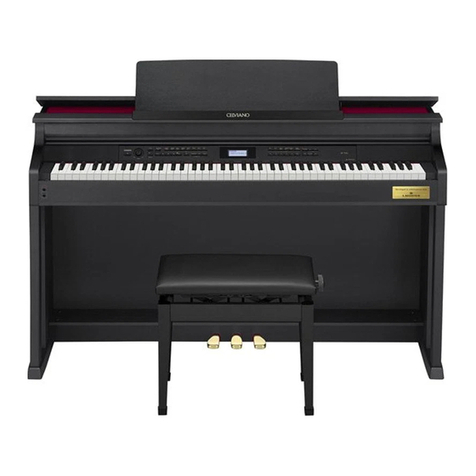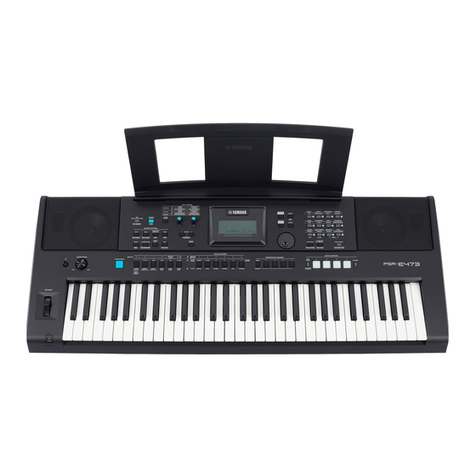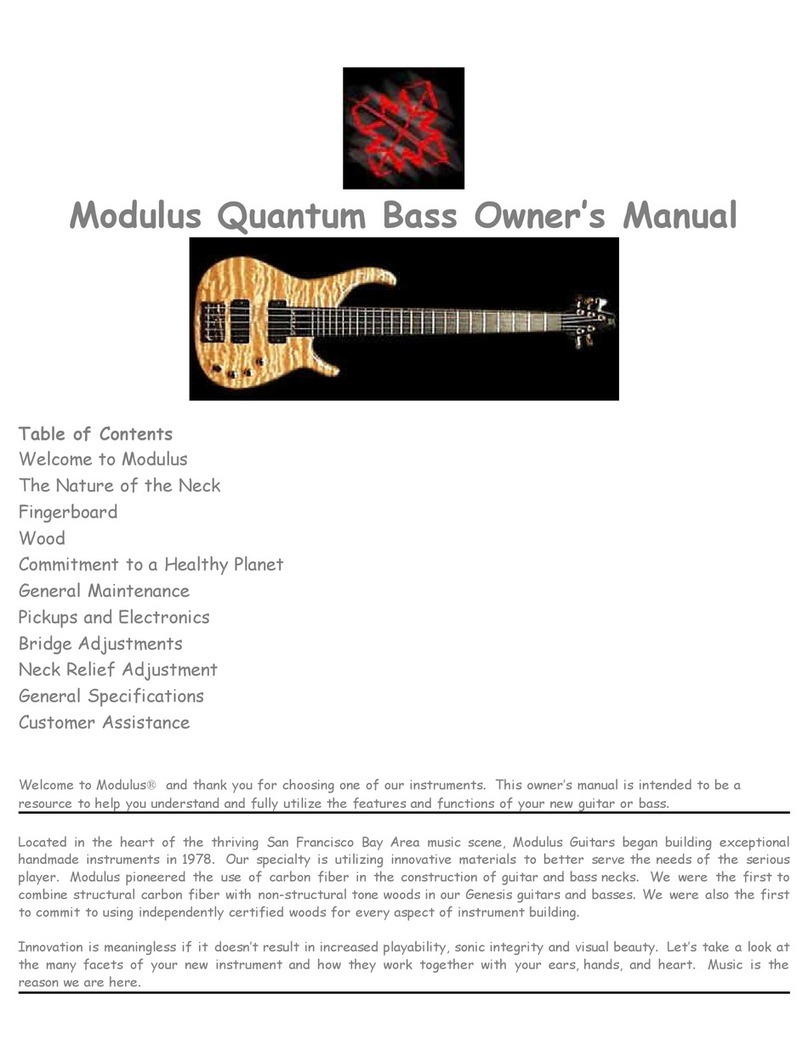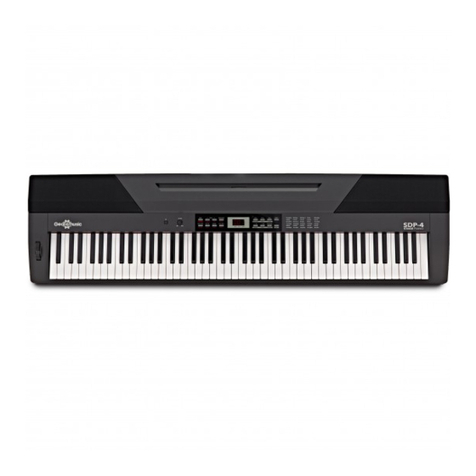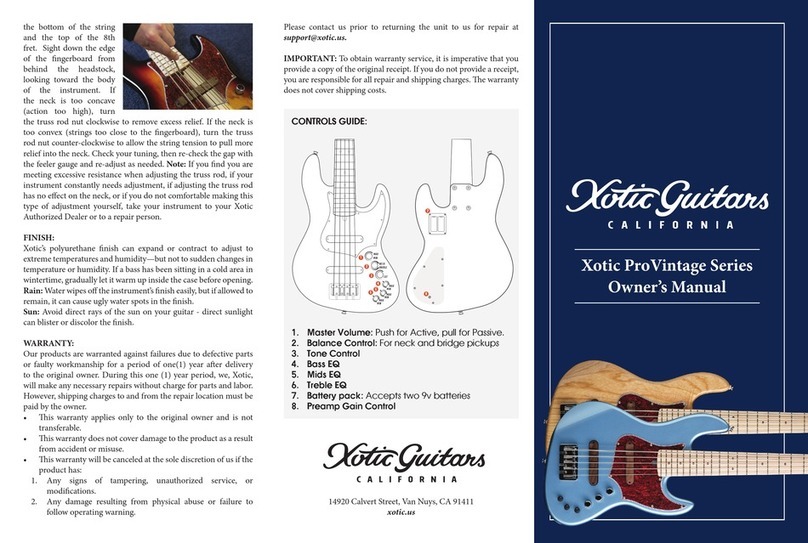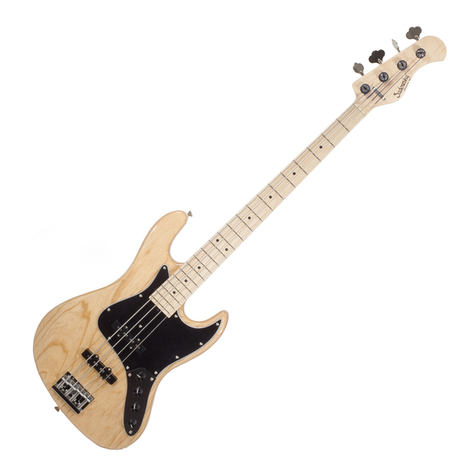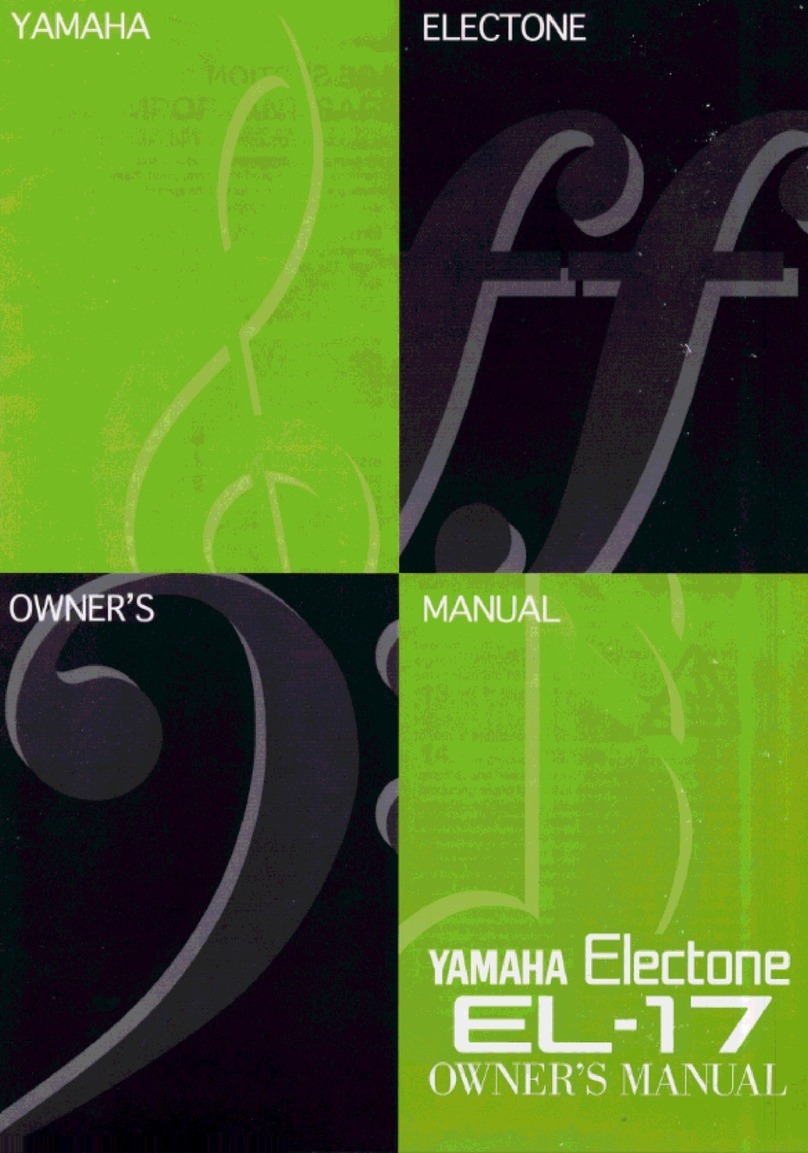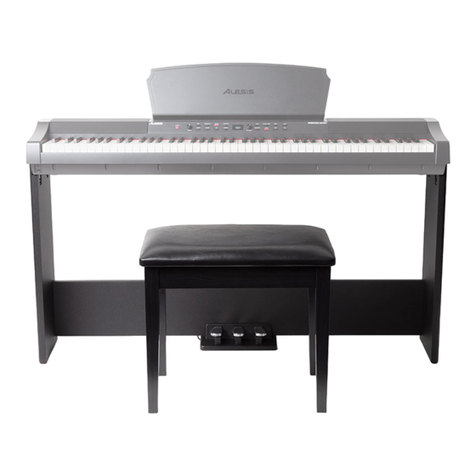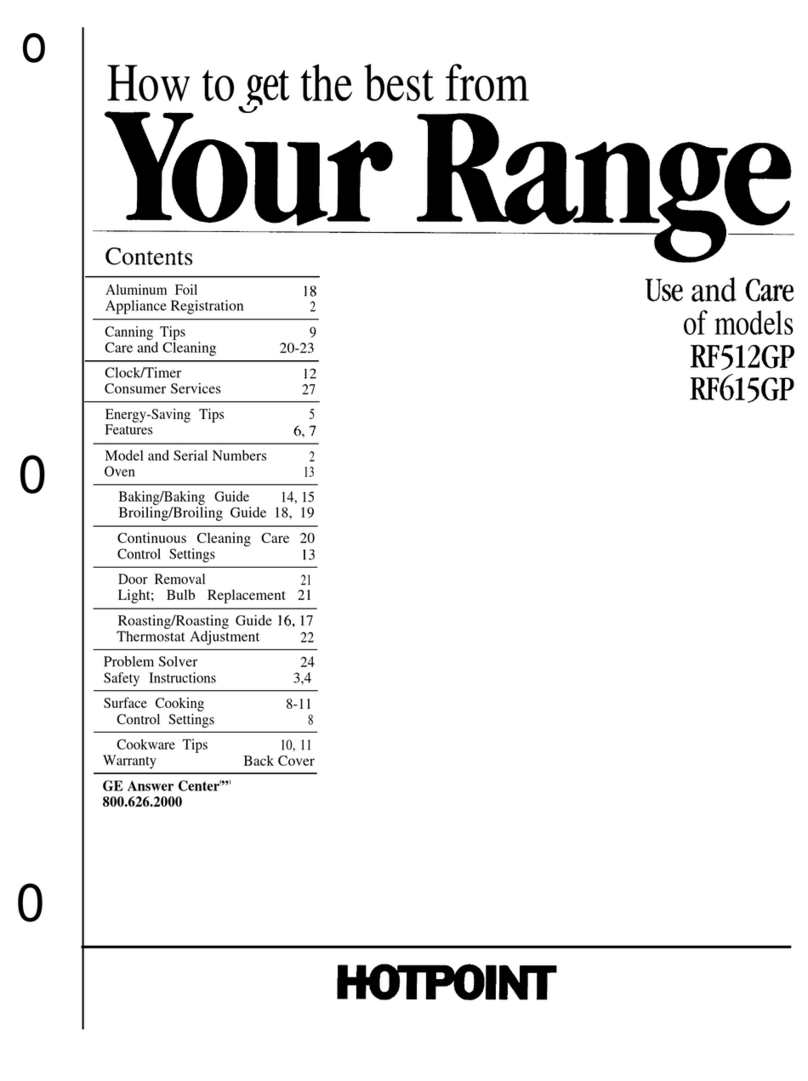
2
Sequencer
A sophisticated 16-track MIDI sequencer is built in.
•The TRITON Extreme combines dual arpeggiators,
RPPR, time slice, in-track sampling, and many other
functions, giving you an integrated music production
environment with even more potential than an
external sequencer would provide. MIDI exclusive
message recording/playback is also supported.
• The Cue List function lets you play up to 99 songs in
the order you specify. For example you could create
separate songs for the intro, melody A, melody B, and
the break, etc., and easily try out different song
structures using the same material. You can also
specify the number of times that each song will repeat.
Songs can also be played back consecutively in jukebox
style.
•Acompleted song can be resampled as a Wave file
and burned to a CD-R/RW drive (sold separately)
connected to the USB A connector to create an original
audio CD.
Sampling
The TRITON Extreme features our Open Sampling Sys-
tem that allows sampling and resampling to be performed
not only in Sampling mode, but also in Program, Combi-
nation, or Sequencer modes.
48 kHz 16-bit linear mono/stereo sampling is supported.
•
Sample memory (RAM)
of 16 Mbytes is factory-
installed, allowing approximately 2 minutes 54
seconds of mono sampling (or approximately 1 minute
27 seconds of stereo sampling). Sample memory can
be expanded to a maximum of 96 Mbytes, which
allows you to record up to six samples of
approximately 2 minutes 54 seconds each (mono) or
approximately 1 minute 27 seconds each (stereo), for a
total 17 minutes 28 seconds of sampling time.
• The
media
(Option)
lets you record up to 80 minutes
as a single sample file in either mono or stereo
(monaural: approximately 440 Mbytes, stereo:
approximately 879 Mbytes). This will create a WAVE
file. (In order to play a media sample from the
TRITON Extreme’s keyboard, it must be able to be
loaded into the sampling memory (RAM).)
In order to sample to media on the TRITON Extreme,
you will need to obtain media of the recommended
type (sold separately). (
☞
p.137)
Song Play
In Song Play mode you can play SMF (Standard MIDI
File) data directly from media. You can also play the key-
board along with the SMF playback, and use the arpeggia-
tor in synchronization with the playback tempo of the
SMF. Format 0 and 1 are supported, and you can also use
the Jukebox function to edit the playback order of the
songs.
Dual polyphonic arpeggiator
• Five preset
arpeggio patterns
(UP, DOWN, ALT1,
ALT2, RANDOM) and 507 user arpeggio patterns are
built-in.
• With the factory settings, these contain a wide variety
of preload user patterns (489).
• In addition to providing conventional arpeggiator
functions, the polyphonic arpeggiator of the TRITON
Extreme can respond to the pitches or timing at which
you play the keyboard, and produce a diverse range of
chords or phrases. This can be used to play a variety of
drum phrases (using the “Fixed Note Mode” that is
ideal for drums), bass phrases, or guitar and keyboard
backing riffs. The arpeggiator is also effective for use
with subtly moving pads, synth sounds, or sound
effects.
• In Combination mode, Sequencer mode, and Song
Play mode, the TRITON Extreme provides dual
arpeggiators that can simultaneously play two
arpeggio patterns. You can apply separate arpeggio
patterns to drum and bass programs, or use keyboard
splits or velocity to switch between arpeggio patterns
for an even more dynamic performance.
RPPR
•The TRITON Extreme features Korg’s RPPR (Realtime
Pattern Play/Recording) function.
In Sequencer mode, this function allows you to assign
preset patterns or user patterns (with a specified play-
back track) to individual notes of the keyboard, and
playback that pattern in realtime simply by pressing
the assigned note. Numerous preset patterns, includ-
ing patterns ideal for drum tracks, are built into the
internal memory.
4-channel audio input/
6-channel audio output
• Both analog (2 channel) and digital (2 channel) audio
inputs are standard, allowing you to record stereo
samples.
The analog inputs have a MIC/LINE level select
switch and a level knob, accommodating a wide range
of audio sources from mic level to line level.
The built-in digital input supports 48 kHz S/P DIF for-
mat digital audio.
The audio input can be routed through effects and/or
Valve Force. During sampling, you can apply effects or
Valve Force, use the TRITON Extreme as a 4-in/6-out
effect processor, or use a vocoder effect that combines
the audio input with internal sounds.
• Six channels of audio output are provided.
For analog output, you have the L/MONO and R main
stereo output, as well as four independent audio out-
puts (INDIVIDUAL) 1, 2, 3, and 4. Individual oscilla-
tors, drums, timbres/tracks, or the output of an insert
effect can be freely routed to any of these outputs.
For digital output, there’s an S/P DIF connector (two
channels; L/MONO and R) that supports a sampling
frequency of 48 kHz.
TouchView user interface
As its user interface, the TRITON Extreme features the
TouchView system with a large 320
×
240 pixel LCD
touch-panel that lets you perform functions simply by
touching the screen – a revolutionary leap in operability
and practicality.
USB connectors allow connection to a CD-R/
RW drive and computer
The TRITON Extreme provides a USB Aconnector and a
USB B connector, allowing you to save data on USB stor-
age media (hard disks, removable disks, CD-R/RW
drives).
You can back-up data from media in the CF card slot to
your computer, or edit data on your computer and load it
into the TRITON Extreme.
